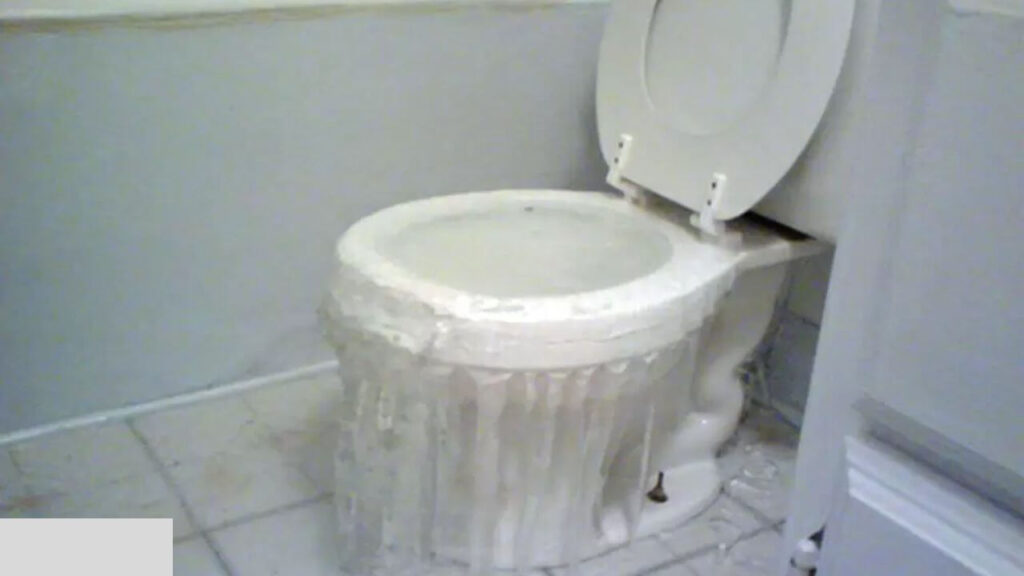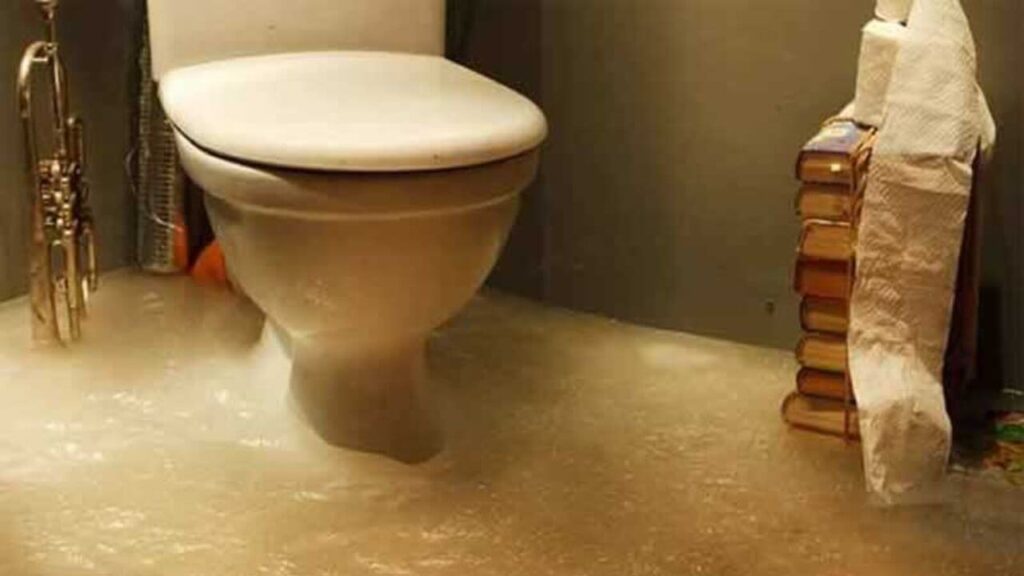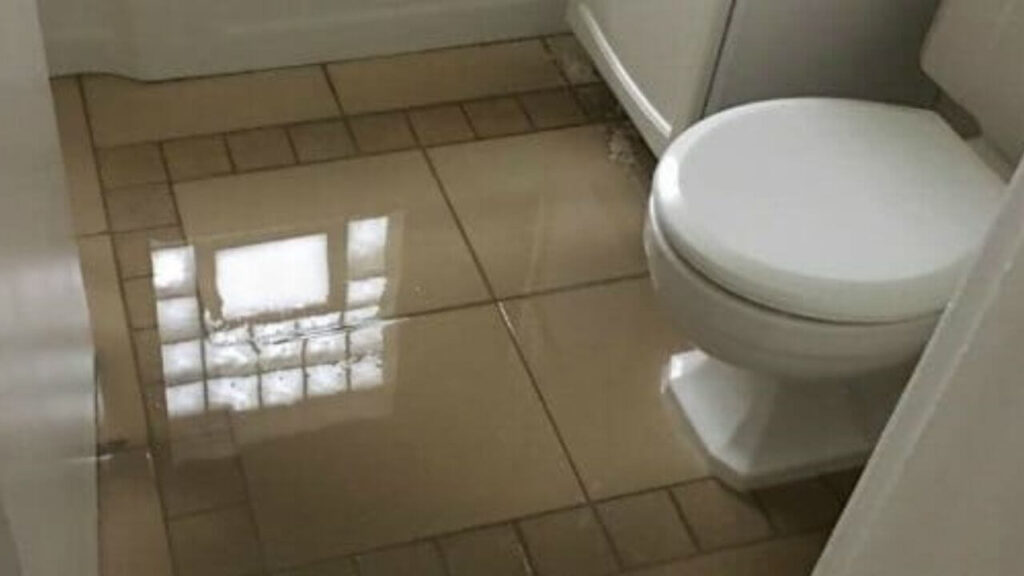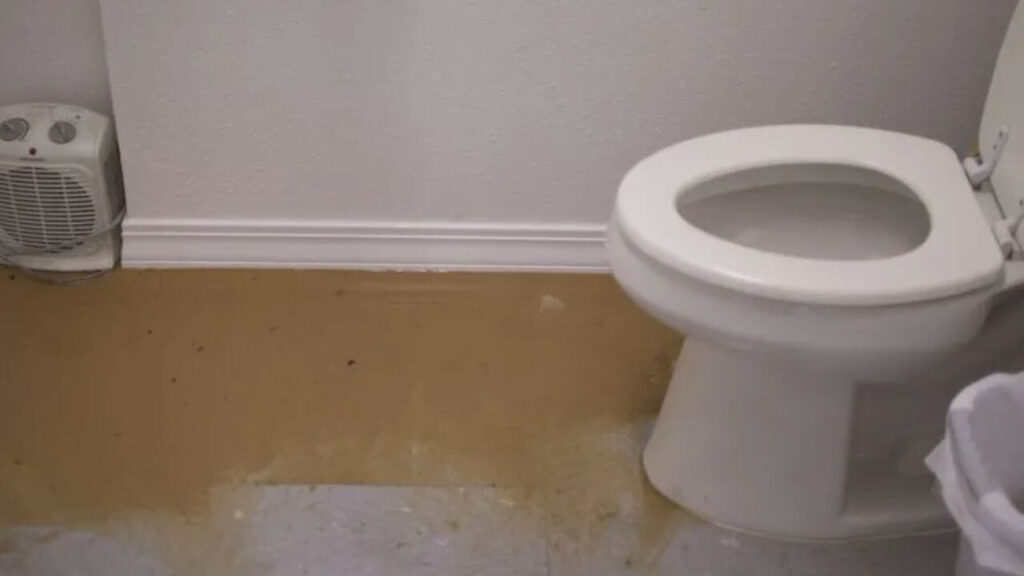Have you ever walked into your bathroom one day and encountered a surprisingly wet floor? Well, for me, it’s the worst part of the day.
The cause is likely an overflowing toilet. But even if you’re sure there isn’t anything clogging your toilet, it can still overflow. Yeah! You read it right.
That’s why In this post, we will explore the potential causes of toilet overflows, even in toilets that are not clogged.
We’ll also look at some valuable tips on preventing and fixing this potentially annoying problem. So you don’t have to go through the same experience again! So don’t waste another second – let’s dive right in!
Can a Toilet Overflow Without Being Clogged?

It’s a strange thought, but yes – a toilet can overflow without being clogged. This often occurs when the water level in the tank is too high, essentially overflowing through the bowl and onto the bathroom floor.
This happens because of how toilets are designed: when you flush them, water from the tank rushes into the bowl and down the drain. If there’s too much water in that initial surge, it can spill over where it shouldn’t go.
Fortunately, fixing this issue is pretty simple—adjust your toilet’s float mechanism to stop filling up once the water level reaches an appropriate height.
As long as you stay on top of regular maintenance like this, you should be able to avoid any messy surprises!
Can Toilets Overflow Without Being Flushed?

Believe it or not, toilets can overflow without being flushed. It sounds like a myth, but it is, in fact, true!
Toilets can overflow without being flushed. The most common cause of an overflowing toilet is a clog in the drainpipe.
The clog can be caused by several things, such as too much toilet paper or objects being flushed down the toilet when they shouldn’t.
Another possible reason for an overflowing toilet is a leaky pipe which allows water to seep into the bowl, eventually causing it to fill up and overflow.
Whatever the cause, overflowing toilets are messy and can cause damage to any room they are located in, so it’s essential to assess the problem quickly.
Make sure to call a plumbing professional if you are unable to fix the issue.
Possible Reasons for a Toilet to Overflow Without Being Clogged

Have you ever had the unfortunate experience of a toilet overflowing without being clogged? It’s an unpleasant situation and can cause much damage if not addressed promptly.
But what causes this to happen? Today, we’re going to look at some possible reasons for a toilet overflow without being clogged.
The Toilet Is Not Vented Properly
If your toilet is vented correctly, it will prevent the bowl from filling up too quickly when the flush valve opens. However, this can result in an overflow even without a clog present.
To fix this issue, check all the vents connected to your toilet and ensure they are open and unobstructed.
If this doesn’t solve the problem, you may need to install a new vent or have a professional check it out to ensure everything is working correctly.
Good to read: Can Two Toilets Share The Same Vent
The Water Level In The Bowl Is Too High
If the water level in your toilet bowl is too high, it could cause it to overflow without a clog present.
To fix this issue, adjust the float ball or cup to level with the water line in your tank.
You’ll want to ensure you don’t lower it too much—otherwise, your toilet won’t flush properly! Once you’ve adjusted the float correctly, give it a few test flushes before calling it quits.
The Flapper or Ballcock Is Not Working Properly
The last common culprit behind an overflowing toilet without a clog is an improperly functioning flapper or ballcock assembly.
These parts control how much water flows into your bowl when you flush it, and if they’re not functioning correctly, they could be allowing too much water into your bowl—causing an overflow.
If this seems like what might be causing your overflowing issue, try replacing these parts yourself or hire a professional plumber if needed.
There Is a Blockage In The Drainpipe
One possible cause of an overflowing toilet without a clog is a blockage in the drainpipe. This could be caused by tree roots or sediment buildup, which can restrict water from flowing through the pipe as it should.
A professional plumber can identify and remove any blockages from the drainpipe so that your toilet is back to normal again.
Filled Septic Tank
If you have a septic tank system installed for your home, then this could also be causing your toilet to overflow without being clogged.
A septic tank needs to be emptied regularly to function correctly; if it overflows, it can cause problems with your plumbing system.
If needed, you may need to hire a professional plumber or septic tank specialist to inspect and empty your septic tank.
Toilet Tank Problem
The last possibility is that there’s something wrong with the actual toilet tank itself.
For example, if there’s an issue with the flapper inside the tank—such as if it isn’t sealing correctly or has become cracked or worn out.
Then this could cause water to flow into the bowl faster than usual and eventually overflow onto the floor.
If this is the case, you’ll need to replace the flapper for your problem to be solved.
How to Prevent a Toilet from Overflowing
If you’ve ever experienced the dreaded toilet overflow, you know firsthand how unpleasant it can be.
From the mess to the stench, overflowing toilets are something no one wants to deal with.
Fortunately, there are some simple steps to help prevent your toilet from overflowing in the future.
Check Your Toilet For Clogs Regularly
One of the most common causes of a toilet overflow is a clog that has gone unnoticed and built up over time until it becomes too large for the water to pass through.
To avoid this situation, it’s essential to inspect your toilet regularly for any signs of a clog.
An excellent way to do this is by flushing it every few weeks and listening for any strange gurgling noises or watching for any slow drainage after flushing.
If you notice anything out of the ordinary, you’ll want to take action immediately before it becomes a bigger problem.
Don’t Flush Anything Other Than Human Waste or Toilet Paper
Another way to prevent an overflowing toilet is by being mindful of what goes into it.
The only things that should ever be flushed down a toilet are human waste and toilet paper—no wipes, no tampons/pads, and certainly nothing else that doesn’t belong there.
Even if something says “flushable,” often, these items can still cause clogs, so it’s best not to risk it to keep your pipes running smoothly.
Invest in Plunger Maintenance Supplies
Finally, having some basic plunger maintenance supplies on hand will help ensure your plumbing system stays well-maintained and free from clogs and other issues that could lead to overflowing toilets or drain blockage.
You’ll want items like rubber gloves, a bucket, trash bags/bins for discarding debris and cleaning supplies for sanitizing afterward once the job is done.
This way, if you do encounter any issues with a clogged pipe or drain blockage due to foreign objects getting stuck in there.
You’ll be prepared with all the necessary tools needed to clear them out quickly and easily without having to call a professional plumber right away (which can save both time and money)!
Inspect Your Plumbing Line
Another thing that can lead to a toilet overflow is an issue with your plumbing line.
If your plumbing line is too narrow or if there are any defects in the pipe itself, it could lead to excess water pressure, which may cause your toilet to overflow.
You should periodically inspect your plumbing line for any signs of damage or obstruction and have it repaired as soon as possible if you notice any problems.
Replace Old Parts
If you have an older model of the toilet, then there’s a chance that some of its parts may have worn out over time which could be causing the overflow issue.
This could include valves, seals, and gaskets that need to be replaced for your toilet to function correctly again.
If you suspect this may be the case, then you should consult a plumber who can identify any old parts that need replacing and replace them with new ones so that your toilet functions correctly once again.
Check the Floater
The floater, or “float ball,” is the plastic piece that regulates water levels inside your tank.
The floater will shut off the water flow into the bowl when the water gets too high.
It should be set just below the overflow tube’s height (usually marked with a small line on your tank). If it appears to be set too low, adjust it accordingly.
Adjust Water Levels
If your water levels are getting too high, try adjusting them manually using a screwdriver and pliers.
You’ll want to ensure that the water level is not two inches below the rim of the toilet bowl. If it is, you’ll need to lower it so it does not overflow when flushed.
However, make sure not to lower it too much, as this could also cause problems with flushing efficiency!
Can a Toilet Overflow Cause Damage?

A toilet overflow can cause severe damage. Unfortunately, many people don’t realize that if their toilet is blocked, the water could continue flowing and end up flooding their bathroom floor.
This can even lead to significant water damage affecting many other house parts, such as walls and insulation.
It could also trigger mold growth due to the damp environment it creates. Considering how easily a toilet overflow can occur, check your plumbing system regularly and ensuring no blockages are present is recommended.
These simple preventative measures can spare you a costly repair job and unnecessary headaches down the road.
Also Read:
Can You Put A Bar Of Soap In Toilet Tank?
Can You Flush Glass Down The Toilet
Can You Flush Floss Down The Toilet
Bottom Line
So there you have it – Toilet overflows are a messy and smelly problem that nobody wants to deal with. If your toilet is overflowing, it’s essential to act fast to clear the blockage and prevent further damage.
In most cases, an overflowing toilet is caused by a clog in the drainpipe. However, there are a few other potential causes of an overflowing toilet, such as a faulty flapper or fill valve.
If you need to figure out what’s causing your toilet to overflow, it’s best to call a plumber for help. Thanks for reading!
